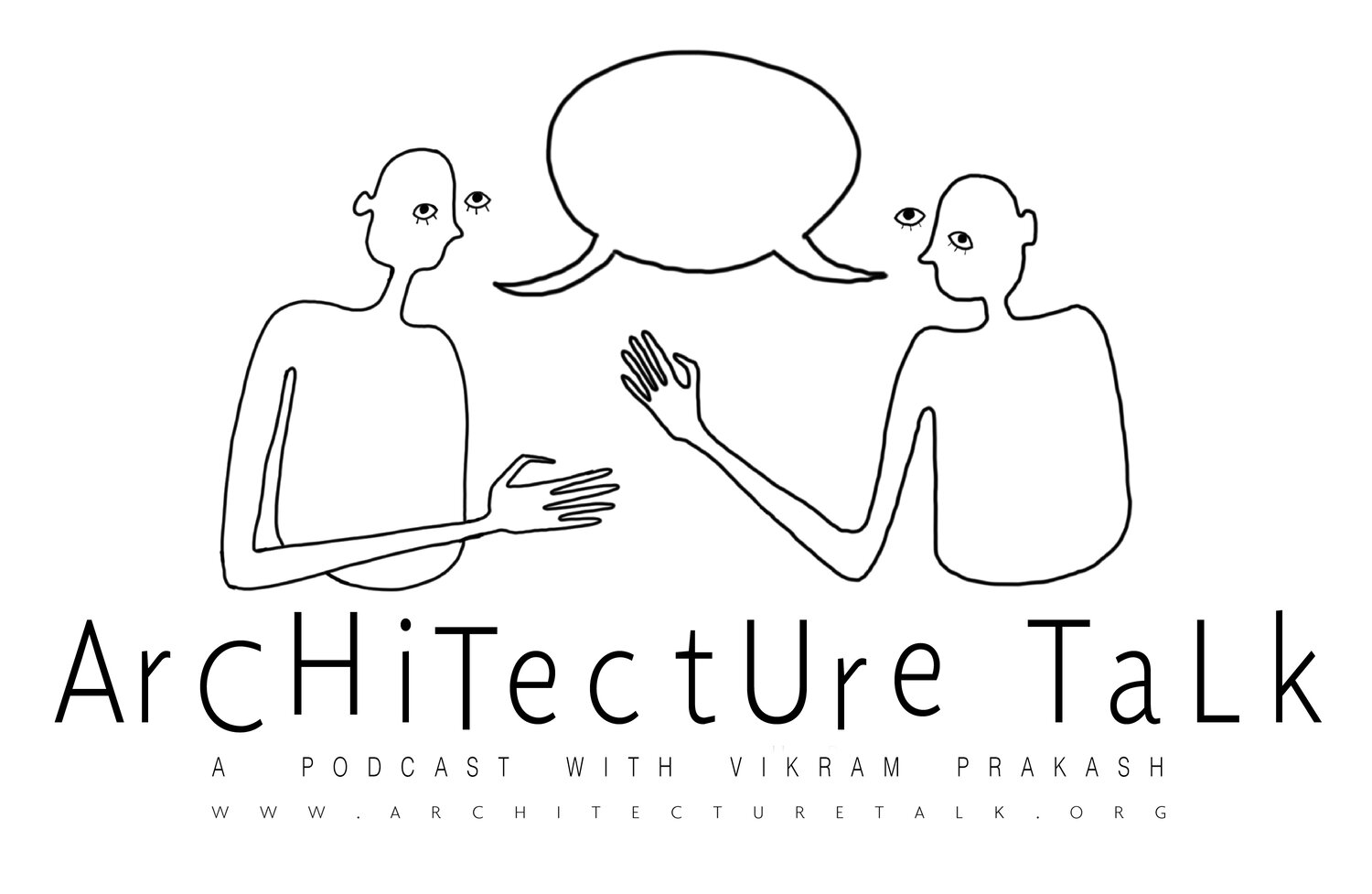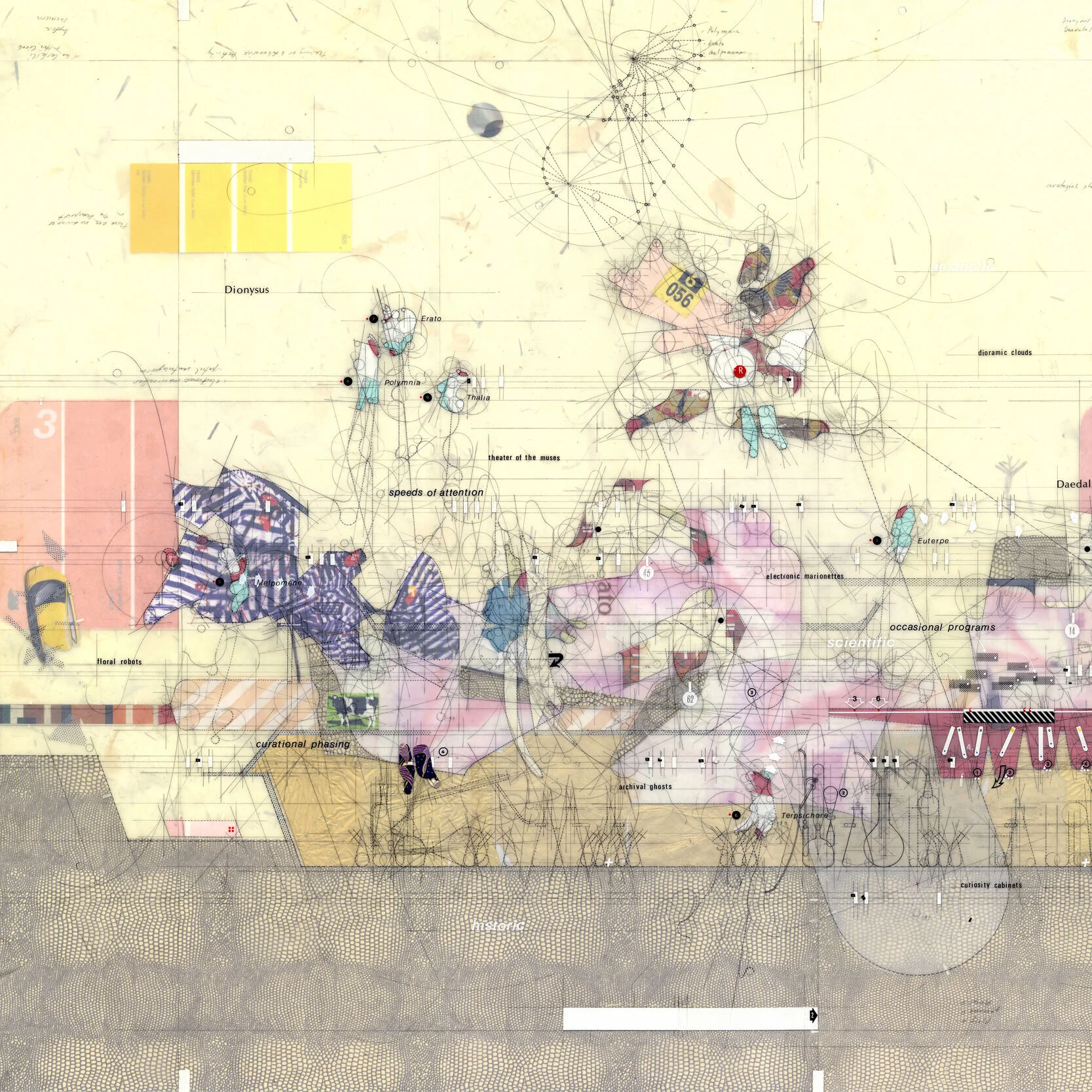68. AITC: Socio-ecological Design with TerreformOne
Original drawing by Tori Haynes
“Design in our use of the term, is socio-ecological...it is one that recognizes the science and engineering side that produces very specified solutions…and then there is the social side…these things need to work in tandem. We design in that stream… and invention is a constant.”
- Dr. Mitchell Joachim
How do we design against extinction in the time of Corona virus? This week, we talk with Dr. Mitchell Joachim and Nicholas Gervasi of TerreformOne about working within the Earth’s metabolism and with actual living organisms to reconfigure what design means in changing times.
Timestamp Outline
2:10 Vikram introduces Terreform
3:00 “What does it mean to live with a germ, live with another kind of living matter that governs our life form?” VP
3:15 Mitchell’s book Design with Life
4:05 Anal Sphincter as windows
4:18 “Why are you so focused on actual living matter as the fabric of contemporary architectural thinking, versus things that are more performative or imitative?” VP
4:50 “Environment and architecture has become something of a bromide...every firm needs to incorporate ideas about sustainability...We have branched off probably two more levels in this idea of green…” MJ
5:30 Organic architecture and Frank Lloyd Wright
5:40 Organic architecture from Frank Lloyd Wright to Modernism (Calatrava)
5:45 Biomimicry, John Todd, Rachel Armstrong, Jenny Sabin, David Benjamin
7:35 TerreformOne’s Bio City Map project uses E. coli as an analog form of computation
7:40 Mycelium-grown blocks
8:00 Monarch Butterfly Sanctuary a facade system that supports the life cycles of the rapidly declining monarch butterfly population
9:40 “Talk to me about the ethical location of this position...where does this come from in terms of contemporary thinking? You talk about all of us as one biology, not just humans, but all species, as one biology...and you have indicated the idea of staving off extinction as a goal or direction....so what is the ethical position that you are taking?” VP
10:28 “It is very much in the vein of deep ecology. Where you recognize an identification of every living organism...” MJ
11:10 Arne Naess
11:18 “Hierarchy assumes that there is an Alpha predator or a steward, which is often assigned to Man as being the leaders responsible for how the web of life is being treated, but in reality if you knock out one major component of this system everything starts to collapse.” MJ
12:15 “You privilege pioneering acts of design as a kind of critical practice to combat the extinction of all species...what do you mean by design from this integrated deep ecological perspective?” VP
12:39 “We are pioneering design in a new form (socio-ecological design)...that there is a science side that specifies very specific solutions...and then there is the social side, which is the capricious public, the leadership class, decisions made outside the normal realm of science, architecture and urbanism, and these things need to work in tandem...we design in that stream.” MJ
13:36 “Design needs to be facile, it needs to be constantly reconfigurable.” MJ
14:08 “Are we simply collaborating with ecologists and organicists and nanotechnologists, or does this require a new kind of knowledge engagement across disciplines?” VP
14:30 “We think that the orthodox understanding of architecture and architecture pedagogy is in crisis...we think of it as a heterodox…” MJ
18:00 Jugaad thinking
18:08 “If one were to integrate this into an actual research and teaching academy, what is your sense of how this would fuction as a school of architecture? And how do you think this kind of thinking translates into a formalized research and teaching institution?” VP
18:50 “We would do away with the Atelier...instead embrace tinkering, DIY, and maker-spaces…” MJ
20:15 Early models of the Media Lab, like the Architecture Machine Group (Nicholas Necroponti) and Bill Mitchell’s Electronic Studio
21:53 “[our labs aren’t] driven by capitalism, we’re driven by curiousity...that’s the type of environment that thrives both in academia and in the commercial world.” MJ
23:00 “A lot of your work seems to be very...technology driven...and yet I would argue it also has a very distinctive aesthetic...where do you locate the aesthetics of your work - what is there pedigree?” VP
23:34 “When it comes to aesthetics, when it isn’t directly derived from functionality, which is a huge part of it, and pragmatism, its driven by desire...we want to build into the artifact something that is exciting, where people are engaged.” MJ
24:45 Cricket shelter
26:30 “How does one design with life with respect to the virus?” VP
28:15 “How does the idea of germ, or hostile organism, integrate into an architectural philosophy that is about a new kind of organic architecture? Do we pick and select the organics we work with? Or are we to somehow work with all organisms?” VP
28:56 “In general we have been working with ideas of modular biodiversity. So we’ve been creating these mosaic biotope wall systems that are plug and play facade elements at a known scale and size...inside of which is a terrerarium...one of the things that a wall system like this does (or one of its variants) is really look at air quality conditions and air flow conditions. And this becomes a great moderator or filter between us and some kind of outside condition.” MJ
30:44 Anna Dyson and The Center for Ecosystems in Architecture
32:55 “...this is one of the most humbling moments in modern times, is the COVID-19 virus, where we realize how fragile we are, how easily our systems can break down both biological and economic-based, and this does get us a sense of togetherness where we realize that nature is the dominant force here…” MJ
33:25 Timothy Morton and Paul Kingsnorth: Dark Ecology
36:50 “What would you pick out as key trajectories in your work that you would foreground as we start to rethink architecture in a post-COVID world?” VP
38:25 “[we have] zero tolerances for terrible uses of concrete, for steel that is applied in a way that is superfluous, for materials in general that are high embodied energy and that don’t really support the earth’s metabolism and for building typologies that don’t make sense or are only done because they are driven by economics.” MJ
38:57 Form follows Finance by Carol Willis
40:00 Discussion of how TerreformOne is funded






